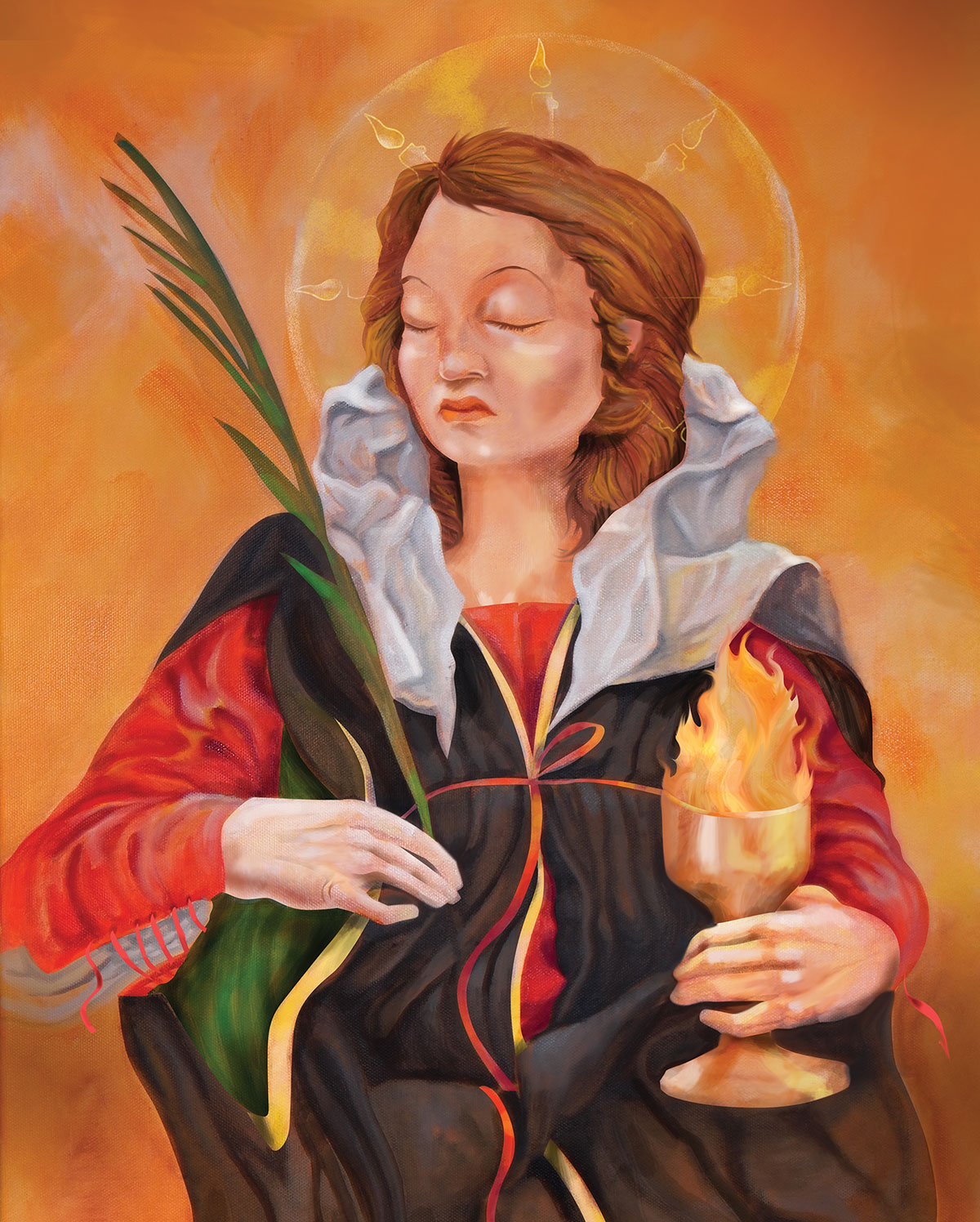Our St. Lucie Connection

Many places on the Treasure Coast are named for St. Lucie. The name was given when explorers for Gov. Pedro Mendéndez de Avilés established a brief outpost in the region on Dec. 13, 1465, her feast day. Lucie, a virgin known for her beautiful eyes, is the patron saint of the blind, and legend has it that her eyes were gouged out during her martyrdom. PAINTING BY ANTHONY BRATINA COMMISSIONED BY INDIAN RIVER MAGAZINE
Had it survived, the Treasure Coast outpost named after the patron saint of the blind would be celebrated today as the nation’s second-oldest community
BY RICK CRARY
The Treasure Coast, which seems so new to us, is really rich with ancient history. Some clues have always been in front of our eyes. We just overlooked them. Take the name St. Lucie, for instance. You hear it everywhere. St. Lucie County, St. Lucie River, St. Lucie West, Port St. Lucie. All are derived from the name of the patron saint of the blind — Saint Lucie. But why would her name loom so prominently among us? The story goes back exactly 450 years ago.
Someday, when heaps of jumbled bones and rusted swords are unearthed from a mass grave in our region, the world will know where a powerful drama took place. For now, the dead are resting somewhere between the outskirts of Fort Pierce and the mouth of the Loxahatchee River to the south. They were the first Europeans to make an attempt to settle the Treasure Coast, but the odds were stacked against them. Most likely they lie beneath the sands of a promontory high enough for ships on the ocean to have spotted their brightly colored banner waving in the air. Somewhere inland near the river, within easy reach of resupply. The high tip of Sewall’s Point might have been a logical place for a company of more than 200 desperate soldiers to have made its stand. We can only guess the location. Ancient Spanish records are conflicting and unclear.
